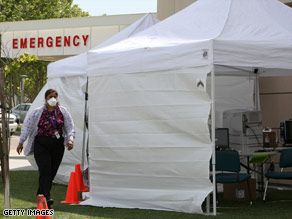From financial crisis to global catastrophe
Financial crisis which manifested in the 2008 (but started much earlier) has led to discussion in alarmists circles — is this crisis the beginning of the final sunset of mankind? In this article we will not consider the view that the crisis will suddenly disappear and everything returns to its own as trivial and in my opinion false. Transition of the crisis into the global catastrophe emerged the following perspective:
1) The crisis is the beginning of long slump (E. Yudkowsky term), which gradually lead mankind to a new Middle Ages. This point of view is supported by proponents of Peak Oil theory, who believe that recently was passed peak of production of liquid fuels, and since that time, the number of oil production begins to drop a few percent each year, according to bell curve, and that fossil fuel is a necessary resource for the existence of modern civilization, which will not be able to switch to alternative energy sources. They see the current financial crisis as a direct consequence of high oil prices, which brace immoderate consumption. The maintenance is the point of view is the of «The peak all theory», which shows that not only oil but also the other half of the required resources of modern civilization will be exhausted in the next quarter of century. (Note that the possibility of replacing some of resources with other leads to that peaks of each resource flag to one moment in time.) Finally, there is a theory of the «peak demand» — namely, that in circumstances where the goods produced more then effective demand, the production in general is not fit, which includes the deflationary spiral that could last indefinitely.
2) Another view is that the financial crisis will inevitably lead to a geopolitical crisis, and then to nuclear war. This view can be reinforced by the analogy between the Great Depression and novadays. The Great Depression ended with the start of the Second World War. But this view is considering nuclear war as the inevitable end of human existence, which is not necessarily true.
3) In the article “Scaling law of the biological evolution and the hypothesis of the self-consistent Galaxy origin of life”. (Advances in Space Research V.36 (2005), P.220–225” http://dec1.sinp.msu.ru/~panov/ASR_Panov_Life.pdf) Russian scientist A. D. Panov showed that the crises in the history of humanity became more frequent in curse of history. Each crisis is linked with the destruction of some old political system, and with the creation principle technological innovation at the exit from the crisis. 1830 technological revolution lead to industrial world (but peak of crisis was of course near 1815 – Waterloo, eruption of Tambora, Byron on the Geneva lake create new genre with Shelly and her Frankeshtain.) One such crisis happened in 1945 (dated 1950 in Panov’s paper – as a date of not the beginning of the crisis, but a date of exit from it and creation of new reality) when the collapse of fascism occurred and arose computers, rockets and atomic bomb, and bipolar world. An important feature of these crises is that they follow a simple law: namely, the next crisis is separated from the preceding interval of time to 2.67+/- 0.15 shorter. The last such crisis occurred in the vicinity of 1991 (1994 if use Panov’s formula from the article), when the USSR broke up and began the march of the Internet. However, the schedule of crisis lies on the hyperbole that comes to the singularity in the region in 2020 (Panov gave estimate 2004+/-15, but information about 1991 crisis allows to sharpen the estimate). If this trend continues to operate, the next crisis must come after 17 years from 1991 , in 2008, and another- even after 6.5 years in 2014 and then the next in 2016 and so on. Naturally it is desirable to compare the Panov’s forecast and the current financial crisis.
Current crisis seems to change world politically and technologically, so it fit to Panov’s theory which predict it with high accuracy long before. (At least at 2005 – but as I now Panov do not compare this crisis with his theory.) But if we agree with Panov’s theory we should not expect global catastrophe now, but only near 2020. So we have long way to it with many crisises which will be painful but not final. (more…)
 A younger science than physics, biology is more linear and less exotic than its older sibling. Whereas physics is (mostly) elegant and symmetric, biology is lunging and ungainly, bound to the material and macroscopic. Its predictions are more specific, its theories less sweeping. And yet, in the end, the exploration of life is the frontier that matters the most. Life gives meaning to all elegant theories and contraptions, life is where the worlds of cosmology and ethics intersect.
A younger science than physics, biology is more linear and less exotic than its older sibling. Whereas physics is (mostly) elegant and symmetric, biology is lunging and ungainly, bound to the material and macroscopic. Its predictions are more specific, its theories less sweeping. And yet, in the end, the exploration of life is the frontier that matters the most. Life gives meaning to all elegant theories and contraptions, life is where the worlds of cosmology and ethics intersect.








